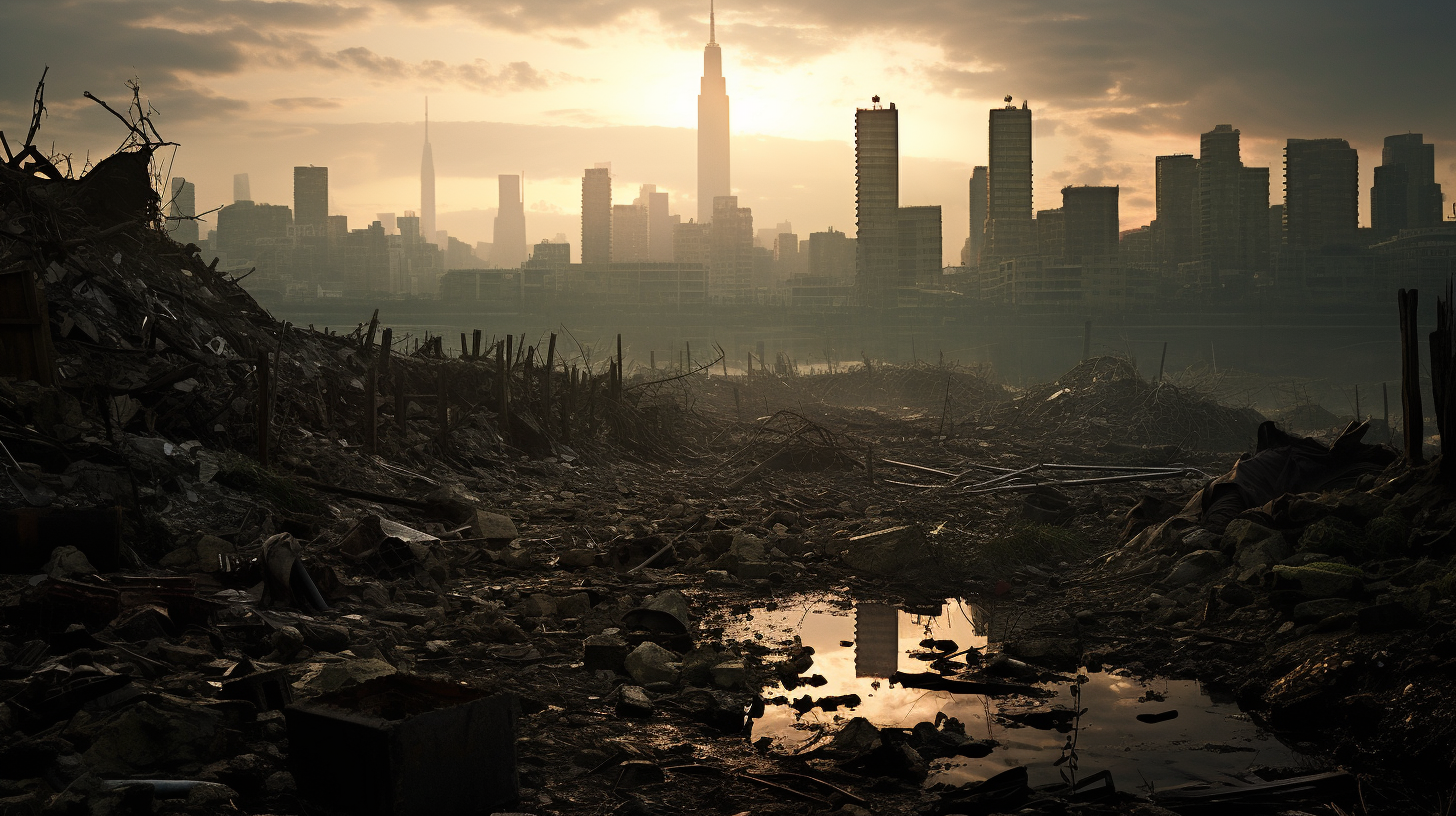In a world barely clinging to the vestiges of natural beauty, our lands have become the theatre for a tragedy unlike any other — the rise of the towering trashscapes. These monoliths of waste, casting long shadows over what was once verdant earth, have become the new rulers of our horizon, monuments to humanity’s insatiable consumption and environmental apathy.
Amidst the heaped rubble and discarded vestiges of a consumerist society, there exists a desperate struggle for survival. Life, in its most resilient form, claws its way through the refuse, seeking sustenance in the scraps of a once-thriving planet. But beneath the imposing piles of plastic, metal, and glass, a different story unfolds — one not of decay, but of a perverse form of adaptation.
Initiates of survival, the forgotten people of the world, have made these trashscapes their home. Where governments have turned a blind eye, and society has tossed aside both its waste and its moral compass, these communities carve out an existence. They are scavengers, not by choice but by necessity, picking through mountains of garbage that dwarf their makeshift abodes, hoping to find something that might be traded for food or, on the off chance, something that still works.
The air is thick with the stench of rot and chemicals, a miasma that suffocates both hope and health. Yet, it is in this inhospitable environment that children run, their laughter incongruent with their surroundings, a defiant spark of joy amidst the desolation. They know no other life — for them, the trashscapes are both playground and peril.
‘We are the forgotten’, whispers an elder, ‘living in the shadow of the world’s refuse.’ Their stories are as discarded as the items that surround them, their pleas for help lost in the winds that carry the acrid smell of decomposition to the far corners of the earth.
Yet, the impact of these trashscapes extends beyond their borders. Pollutants leach into the soil and water, creating a slow-moving disaster that encroaches on all forms of life. The once clear rivers run with the colors of effluence, the toxins from the trash merging with the water that communities downstream rely on for survival.
And what of the wildlife? Creatures that once roamed the forests and fields now navigate landscapes littered with dangers. Ingestion of plastics has become commonplace, the deceptive remnants of our modern world wreaking havoc in the guts of animals large and small.
The irony is as bitter as the legacy we leave: what was once manufactured to make life convenient is now the very thing choking the life out of our planet.
In the shadows of these giants, there is a message, a dire warning that seems to resonate in the very ground we tread upon. Every new mound of trash contributes to the growth of these trashscapes, a stark visualization of the trajectory of mankind’s impact on our world.
We end our chronicle on this serene yet somber note, the imposing silence among the waste serving as a solemn reminder of what has been lost — and what will continue to be lost unless action is taken. But one must wonder, as the silhouette of the trashscapes blots out the setting sun, is anyone still listening?
In a time where these Goliaths of garbage seem indestructible, the struggle continues, both above and below. It’s a battle waged in the bleakness, a fight for the future that seems already written in the refuse of the past.
In the end, the shadows of giants stretch far beyond the heaps of decaying detritus; they reach into the very soul of humanity. And beneath these towering trashscapes, the struggle endures, relentless and largely unseen — a testament to both our failings and our fortitude.
